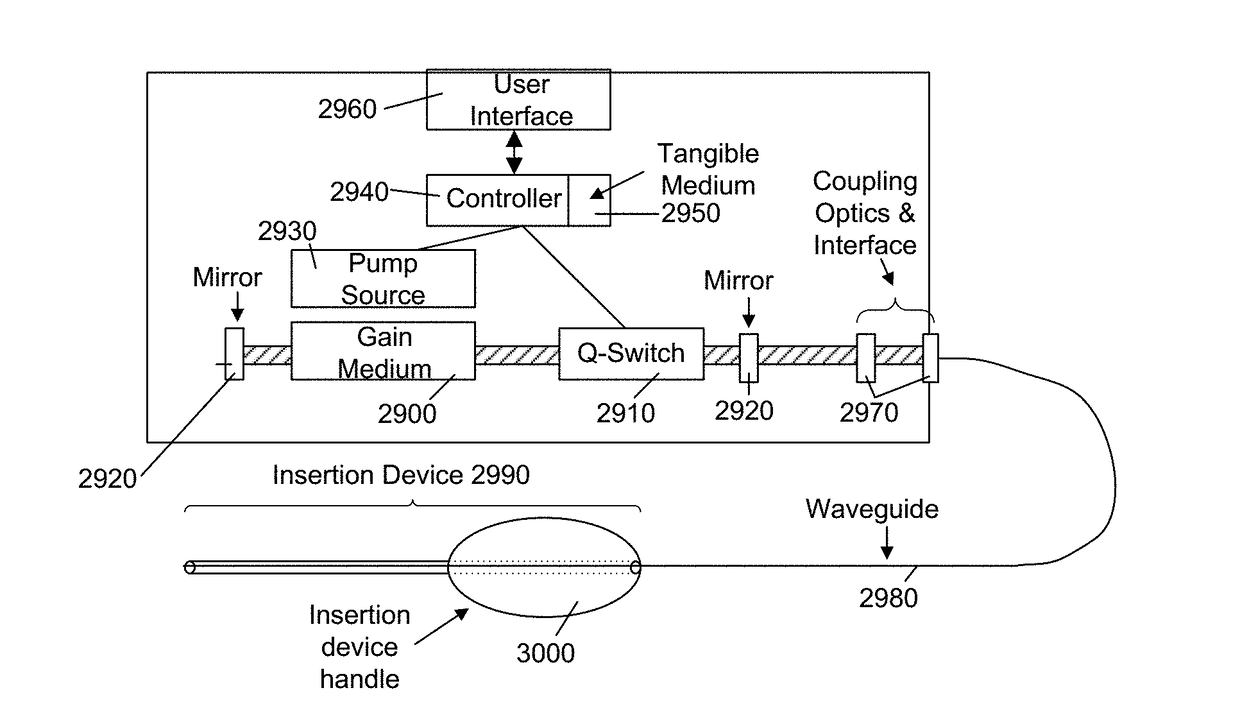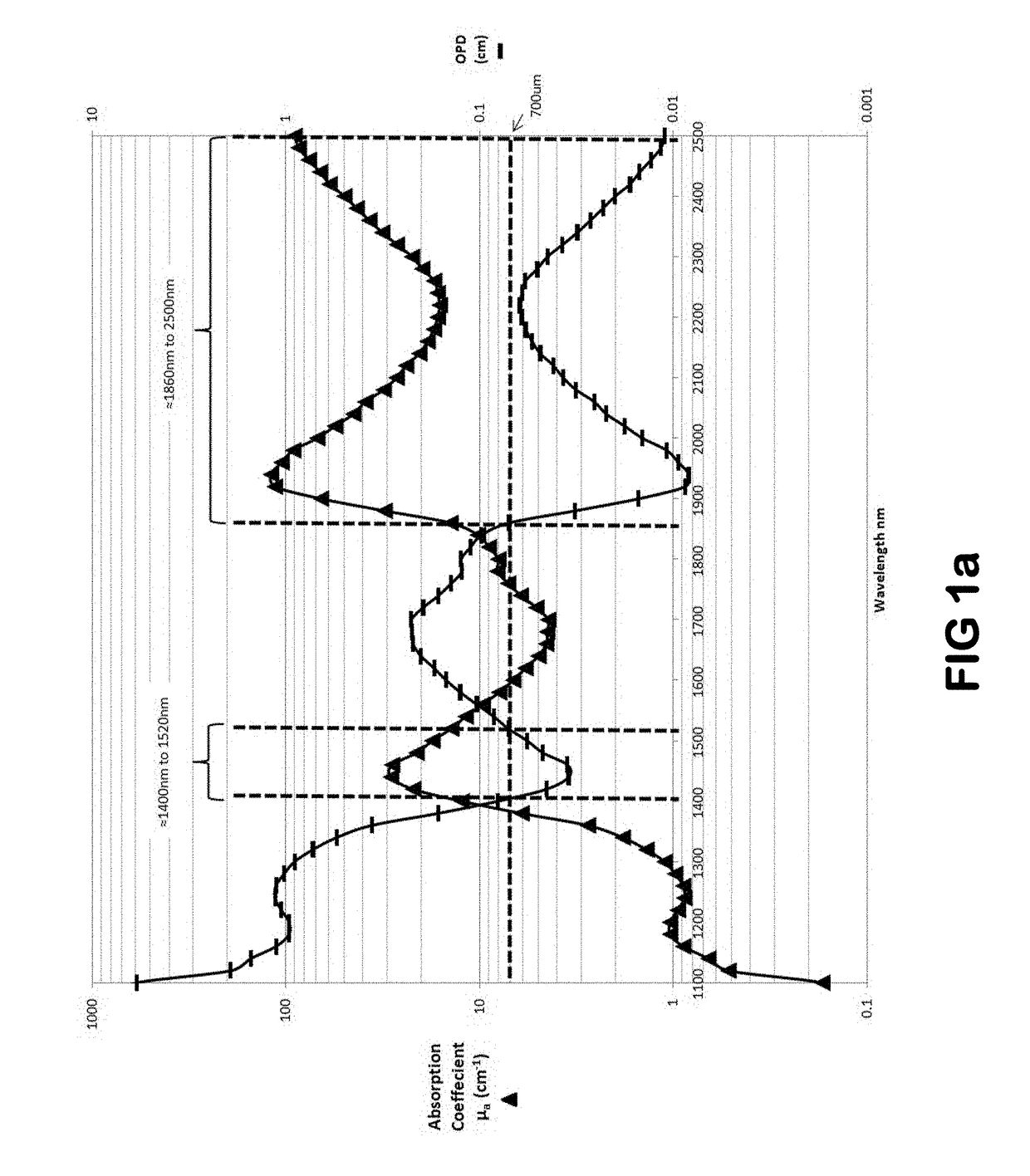Soft tissue selective ablation surgical systems
a surgical system and soft tissue technology, applied in the field of soft tissue selective ablation surgical systems, can solve the problems of inconvenient tissue cutting, inducing tissue mechanical trauma, and devices having disadvantages,
- Summary
- Abstract
- Description
- Claims
- Application Information
AI Technical Summary
Benefits of technology
Problems solved by technology
Method used
Image
Examples
Embodiment Construction
[0047]Embodiments of the present invention as described herein provide fast and efficient laser based cutting. The laser based cutting modality as described herein is applicable to a variety of tissue types and surgeries, such that there is no substantial thermal or mechanical damage or effect on the tissue adjacent to the cut. The spinodal decomposition process generates pressure within the target tissue volume. The pressure is generated, in part, when the chromophore, for example water, in the target volume reaches or exceeds the spinodal threshold, thus initiating spinodal decomposition, on a time scale sufficient to substantially prevent propagation of thermal or mechanical energy beyond the target volume. The pressure generated ejects material from the target site. The amount of pressure to adequately or optimally eject substantially all of the target volume is, in part, dependent upon the mechanical properties of the tissue itself. Various tissue types have different mechanica...
PUM
 Login to View More
Login to View More Abstract
Description
Claims
Application Information
 Login to View More
Login to View More - R&D
- Intellectual Property
- Life Sciences
- Materials
- Tech Scout
- Unparalleled Data Quality
- Higher Quality Content
- 60% Fewer Hallucinations
Browse by: Latest US Patents, China's latest patents, Technical Efficacy Thesaurus, Application Domain, Technology Topic, Popular Technical Reports.
© 2025 PatSnap. All rights reserved.Legal|Privacy policy|Modern Slavery Act Transparency Statement|Sitemap|About US| Contact US: help@patsnap.com



